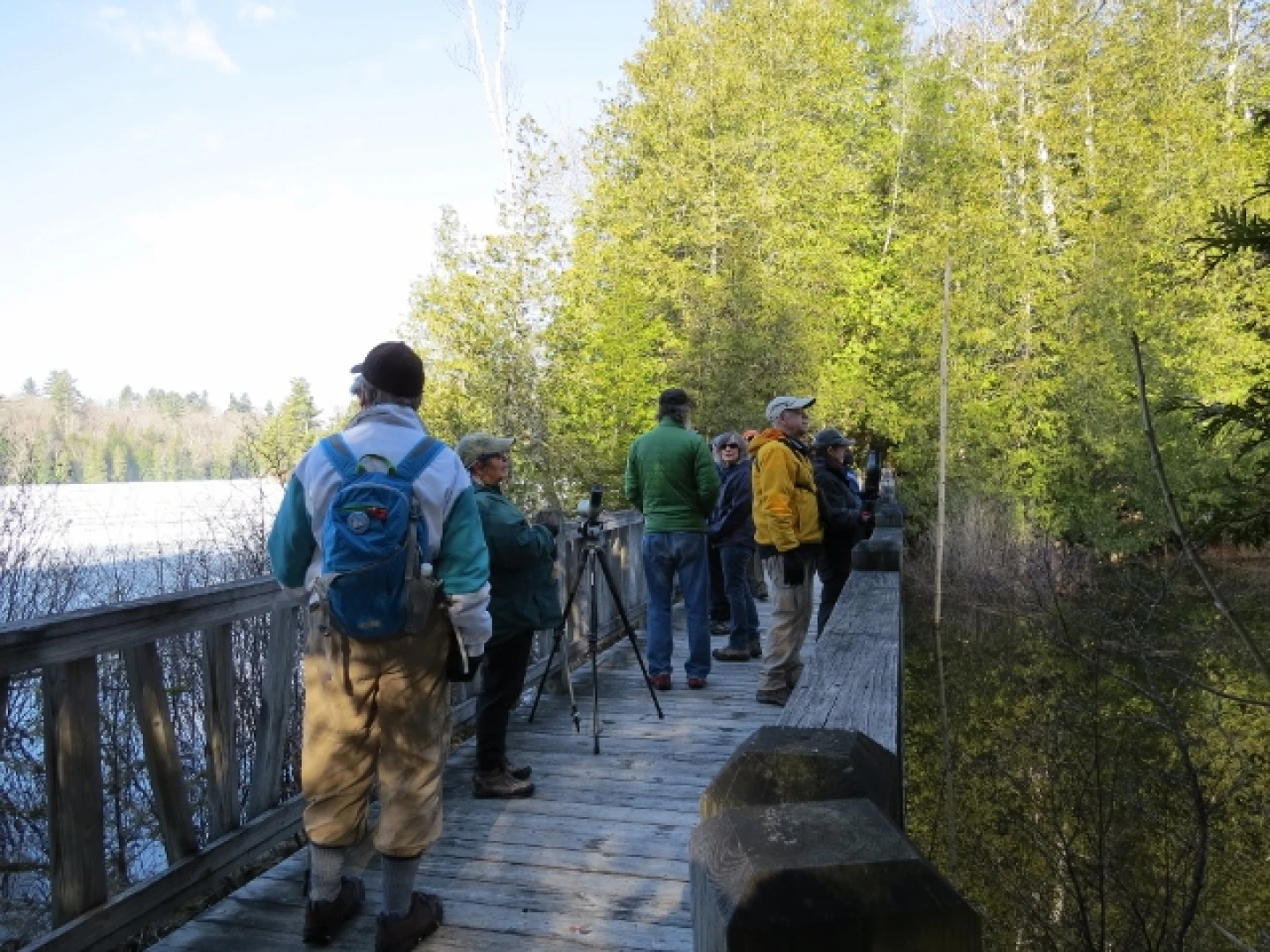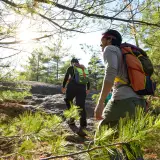It was a beautiful day for the Adirondack Interpretive Center’s (AIC) “Migration Celebration.” I led a morning bird walk on two of the AIC’s four trails. After the walk, Wendy Hall, from the Adirondack Wildlife Refuge and Rehabilitation Center, gave a presentation on raptors, bringing along several of the Center’s birds.
The Bird Walk: Rich Lake Trail
The AIC offers 3.6 miles of well-maintained, scenic trails and a picnic area for the public. The bird walk began on the Rich Lake Trail, which is a loop trail just over half a mile long. Rich Lake was still frozen and the trail was snow and ice covered, so we proceeded slowly! There are several lovely bridges along the trails.
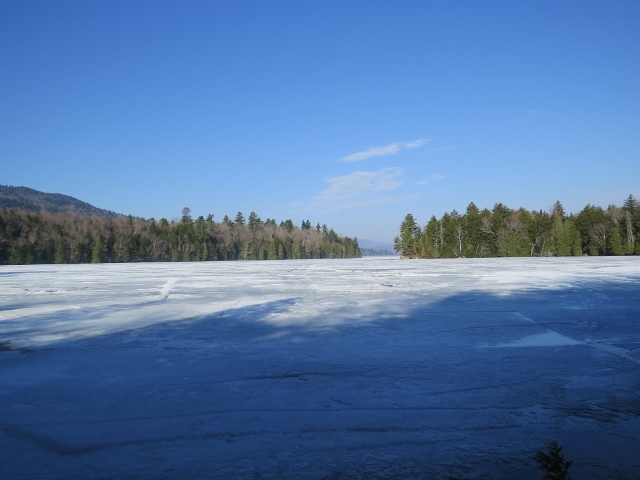
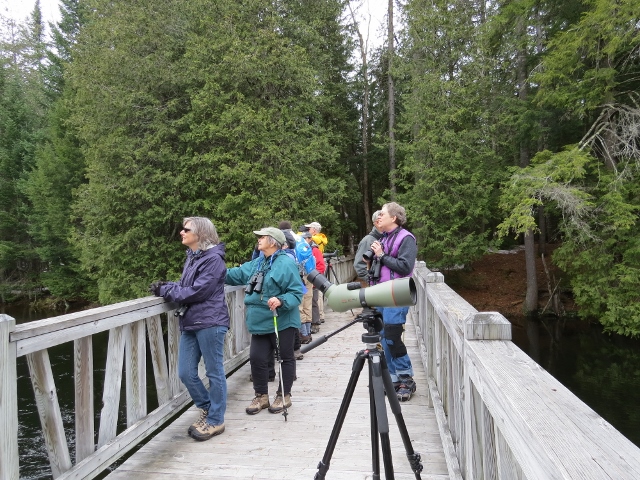
Many birds were heard and observed along the trail. A Fox Sparrow migrant was the loudest singer near the AIC building!
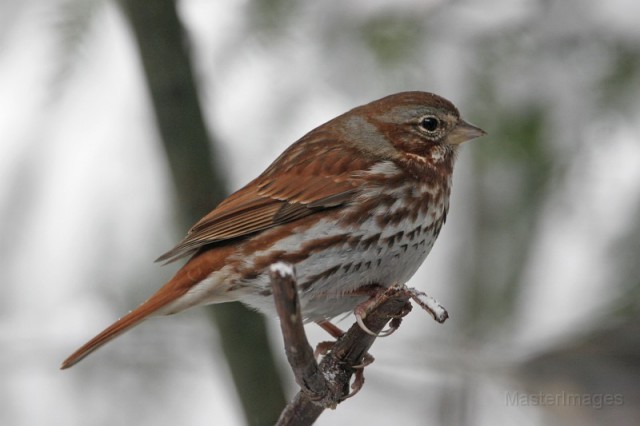
The biggest surprise was finding a Northern Cardinal singing away in heavily forested habitat! It was likely attracted to the AIC bird feeders, which were still up.
Winter Wrens recently arrived and were quite vocal along the trail.
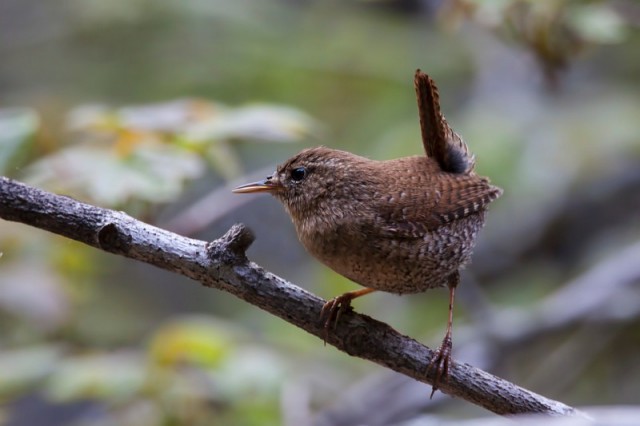
We had lovely views of a recently arrived Hermit Thrush near the AIC building.
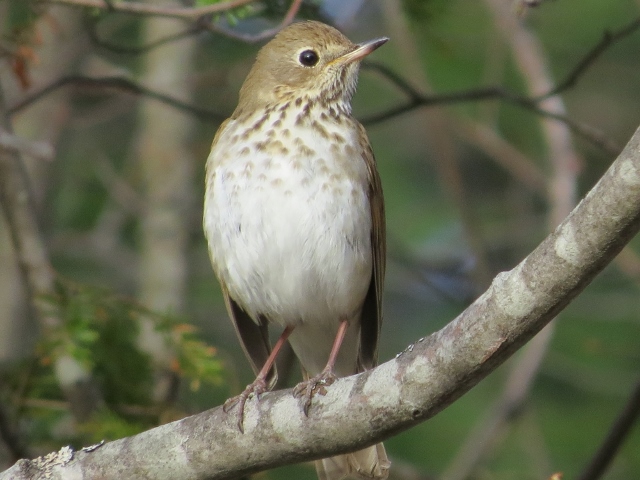
The Adirondack Interpretive Center (AIC)
A brief break was held inside the Adirondack Interpretive Center building before hiking the second trail. Wonderful breakfast foods and drinks were laid out for participants by the AIC staff.
The AIC is part of the State University of New York’s Environmental Science and Forestry campus in Newcomb. The AIC building has large glass windows that offer lovely views of the surrounding forest and bird feeders. The building also offers an array of exhibits, props, and publications that allow you to explore the natural and cultural history of the Adirondacks.
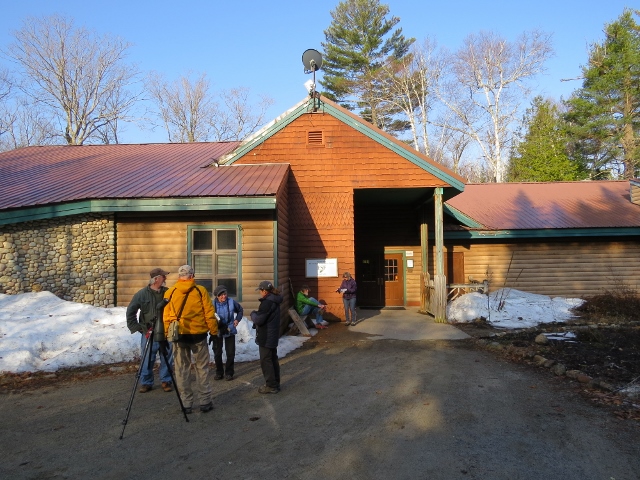
The AIC offers public programs, events, speaker series, courses and other activities throughout the year to the public as well as school groups. So keep an eye on the AIC’s schedule of events!
The Bird Walk: Sucker Brook Trail
After a break in the AIC building, the bird walk continued on the mile-long Sucker Brook Trail. The trail borders both sides of the outlet of Rich Lake to a location where it flows into Belden Lake. Belden Lake’s outlet flows into Lake Harris, which in turn flows into the Hudson River. The outlet was free of ice and swiftly moving.
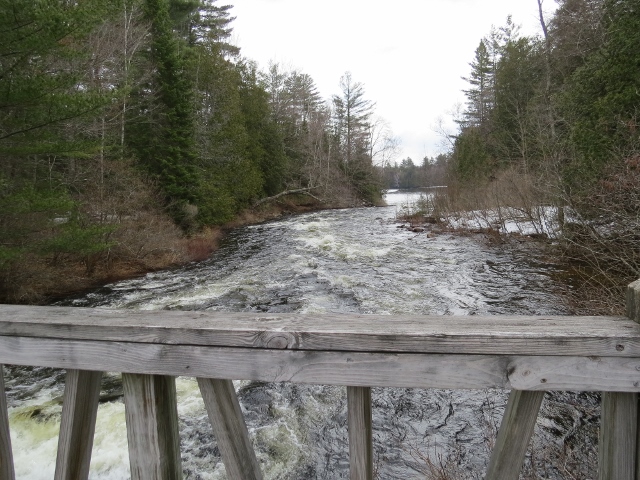
There are two large bridges that cross the Rich Lake outlet.
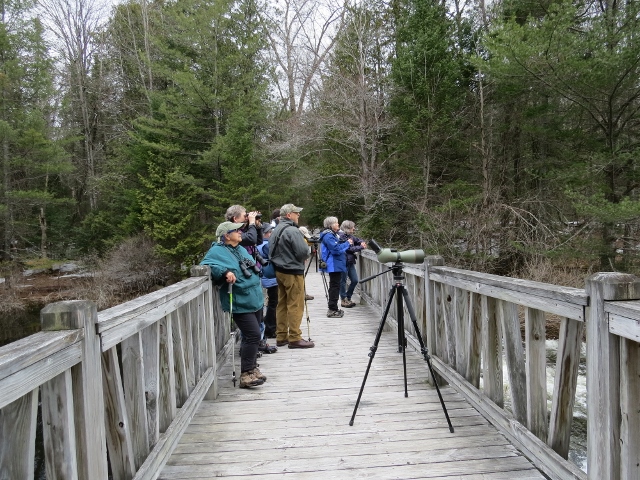
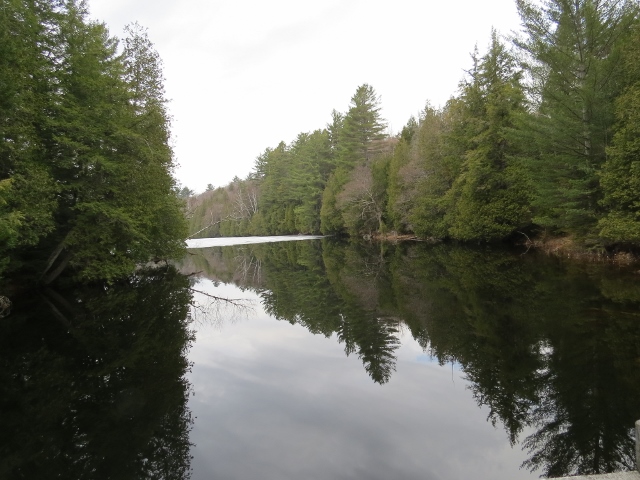
We had another view of a Hermit Thrush as it foraged on the ground. The presence of the thrush got a strong reaction from a Winter Wren, which briefly showed itself on a downed tree.
Golden-crowned Kinglets and Brown Creepers vocalized. We had nice views of a Ruby-crowned Kinglet – in this habitat, a migrant. They nest in both high and low elevation boreal habitat in the Adirondacks. Yellow-bellied Sapsuckers drummed and called. A Northern Flicker, the only ground-foraging woodpecker species in the Adirondacks, was active near the AIC building. Northern Flickers and American Robins show up in the spring when the snow melts and they have access to the ground.
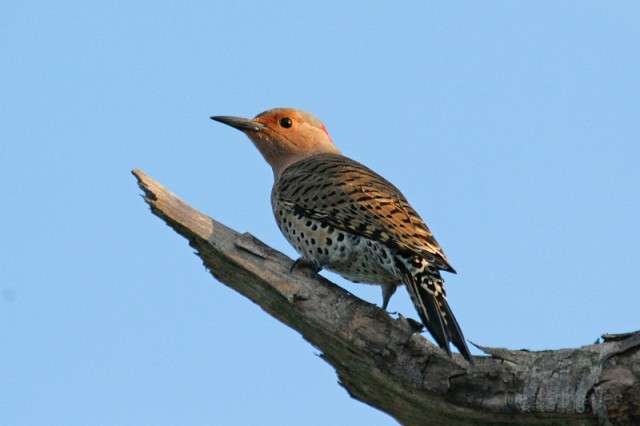
In addition to the loud, migrant Fox Sparrow, several other sparrow species were found: Song, Swamp, and White-throated Sparrows, and Dark-eyed Juncos.
Flocks of Red-winged Blackbirds and Common Grackles vocalized.
Migration is in full swing!
Raptor Presentation by Wendy Hall
After we returned from hiking the Sucker Brook Trail, Wendy Hall, and staff from the Adirondack Wildlife Refuge and Rehabilitation Center in Wilmington, gave a presentation on raptors. She brought along many of the Center’s resident raptors. A Barn Owl delighted the children (& adults) in the audience. This species nests south of the Adirondacks and has become quite rare in New York State.
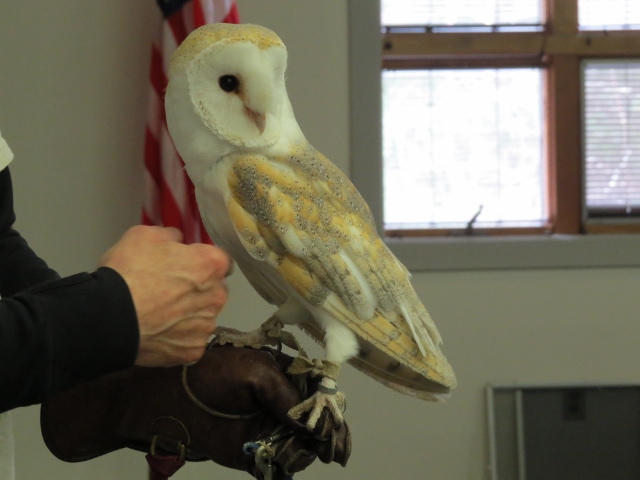
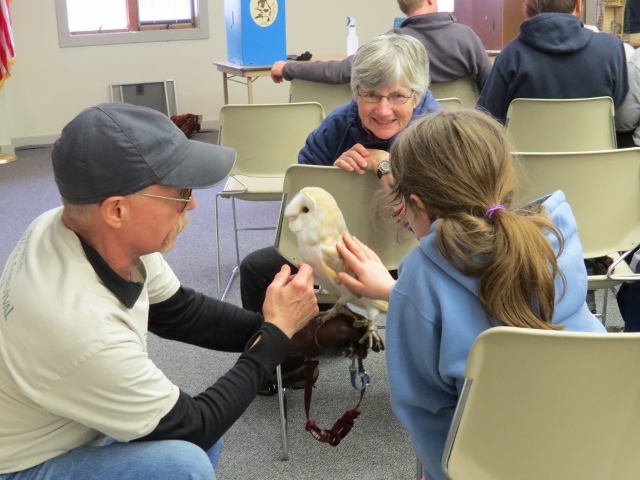
An American Kestrel, the smallest falcon species in the Adirondacks, was quite vocal and animated.
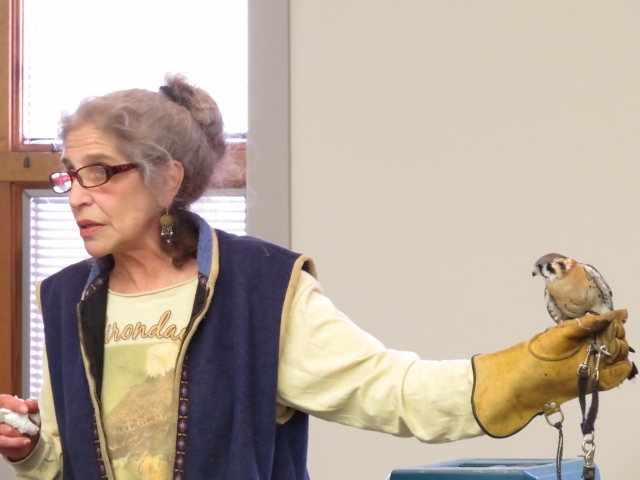
Children enjoyed seeing the Northern Saw-whet Owl, the smallest owl species in the Adirondacks.
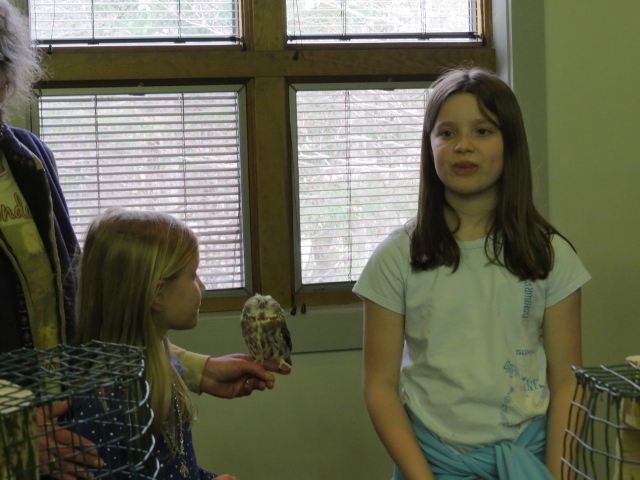
Wendy discussed the amount of food it requires to feed all of the sick and injured animals that are cared for at the Center. She makes long drives to pick up fish for species such as Bald Eagles. A constant supply of small mammals is needed for many of the raptors. Animals that can be, are released after rehabilitation. Those too injured to be released continue to be cared for at the Center.
It was an enjoyable presentation by caring rehabilitators, the unsung heroes for sick or injured wildlife.
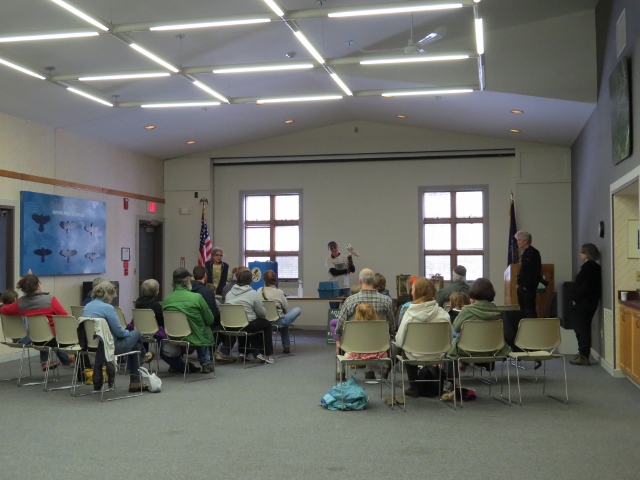
The Migration Celebration morning events were fun and interesting.
Visiting the Adirondack Interpretive Center
A visit to the Adirondack Interpretive Center in Newcomb is always an educational experience. The naturalists are friendly and eager to share their knowledge of the Adirondack flora and fauna with visitors.
From Memorial Day to Labor Day, the AIC is open 7 days a week from 9 am to 5pm. From Labor Day to Memorial Day, the AIC is open from Tuesday to Saturday from 10am to 4 pm. The trails are always open 7 days a week during daylight hours.
If you plan to visit, there are many comfortable lodging and restaurant options nearby!
